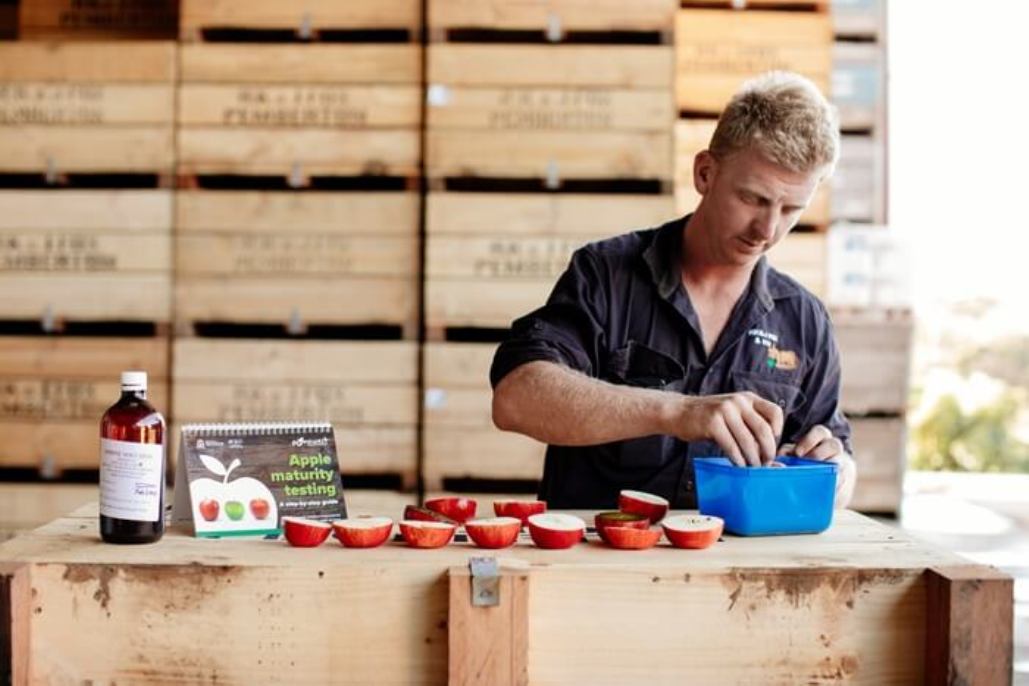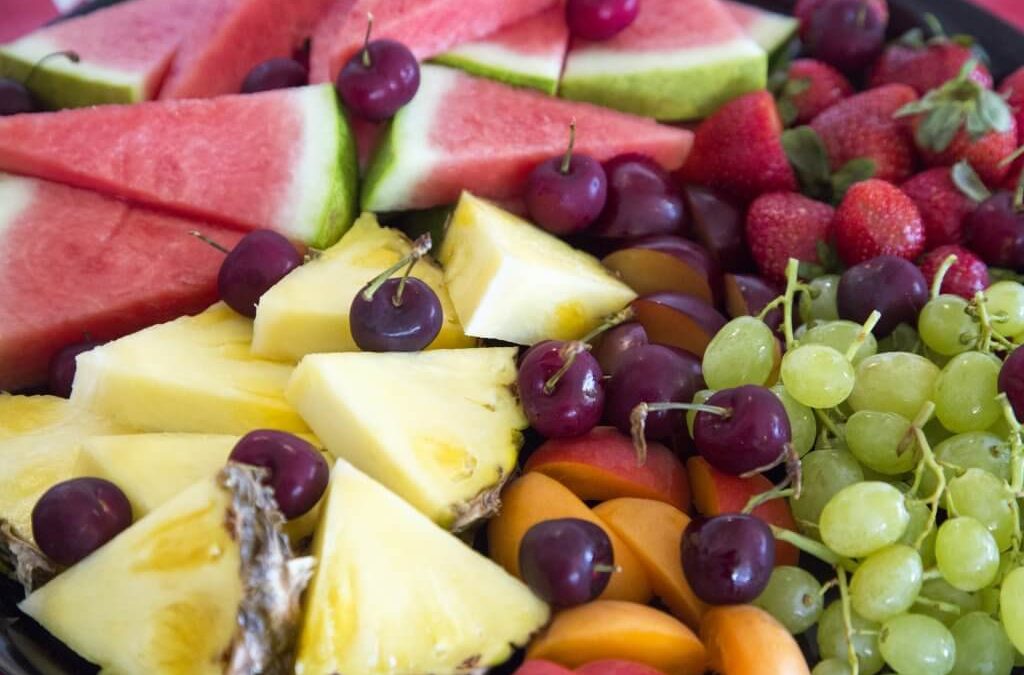The summer fruit season sees the arrival of new season stone fruit, as well as mangoes, berries and cherries at very competitive prices.
As the saying goes ‘the best way to anticipate change in your sector is to spend time outside of your sector’.
Summer fruit switching
Across the second half of 2020 apple retail prices have been around the $5-6 kg mark and above long-term average prices. In addition to a relatively small crop, the higher prices are also attributable to increased consumer demand for fresh produce due to COVID-19.
Disrupting this nice alignment of high demand and low supply is the kick of the summer fruit season and the arrival of new season stone fruit, as well as mangoes, berries and cherries at very competitive prices, with excellent quality and plentiful supply. For consumers – and especially more price-sensitive consumers – there are compelling reasons to switch their purchases from apples and pears to these newly arrived, exciting fruits.
As we discussed in our spring article, it is the ease with which consumers can substitute other seasonal fruits for apples and pears during the summer months that makes demand for apples and pears over this period more sensitive to price changes.
In this article we take a look at what apple and pear producers can learn from this ‘summer switching’ phenomena and in particular from the programs summer fruit categories have put in place to entice consumers back to their category each season. (Summer fruits – for the purposes of this article, we have included mangoes, grapes and berries alongside the traditional summer stone fruits).
High stakes demand high quality
Summer fruits have a sense of urgency because, as their category name suggests, they are available for only a few months of the year which creates a sense of anticipation and excitement.
The short window of supply also means they must consistently meet the quality expectations of consumers to ensure repeat purchases during the supply period. A consumer biting into a soft or tasteless apricot or peach might not pick up another for the rest of the season. The stakes are too high to market sub-standard fruit.
According to management consultant and fresh produce specialist Tristan Kitchener, Kitchener Partners, what’s common to many of these categories is their ‘consumer-first’ strategies.
“The table grape industry has spent the last three years using consumer research to develop Minimum Maturity Standards to ensure a minimum Brix set at a consumer acceptability of 80 per cent. This not only ensures the Brix threshold is high enough to meet consumers expectations it also minimises variability within a bunch,” said Tristan.
“Similarly, mangoes have introduced on-farm dry matter testing using near infrared (NIR) technology to ensure mangoes will be picked at the correct maturity and deliver a consistently good eating experience.
“Increasingly, quality parameters are being measured on-farm and throughout the supply chain, and it’s a smart way to support demand for their increasing production, which is growing at four per cent a year, reaching $280 million by June 2022.
“The fact that testing is conducted on-farm with growers taking responsibility to prevent substandard quality fruit being harvested in the first place (which if picked would ultimately always find a home and a consumer to dissatisfy) and the transparency in sharing the results within the industry, indicates a mature and aligned approach to secure their future growth and protect the Australian Mango brand reputation and price premium.”
Berries is another category that has seen immense growth in the last five years. Blueberries is perhaps the standout as it has experienced the largest growth, perhaps fuelled by banana growers exiting the banana industry due to declining returns and the looming impact of the deadly Panama TR4 virus that is spreading insidiously across Far North Queensland.
“Improving genetics and increasing protected cropping to extend seasons is providing consumers with a better-quality product at a cheaper price, making blueberries a regular purchase for many consumers – and you may have noticed the ever-increasing size of blueberry punnets in the majors,” said Tristan.
What can we learn?
“The summer fruit categories are maintaining their market value by providing a consistent, good-eating experience for the consumer from the very first purchase and continuing through the supply period. This reliability helps transition early-season interest into ongoing, repeat purchasing,” said Tristan.
APAL Industry Services Manager Justin Smith believes the summer fruit quality programs signal two important messages for apple and pear producers.
“With consumers able to rely on summer fruits to provide consistent quality, we should expect variable apple and pear quality during this period to be judged harshly,” Justin said.
There are indications that the COVID-19 impact on export freight and the recent China trade issues may create difficulties for at least a portion of Australia’s summer fruit exports this season. During the 2019–20 season 36,300 tonnes of cherries, mangoes and stone fruits with an export value of $200 million were exported from Australia with 28 per cent going to China.
“While some of this export fruit will find alternate markets, a portion of this export-quality fruit is expected to find its way into the Australian retail market. It’s yet to be seen if the supply will result in even more competitive prices for summer fruits but it could well raise quality expectations even higher,” warned Justin.
“Once we move past the summer fruit period the challenge is to encourage consumers to return to new season apple and pears – and ideally to return with confidence and enthusiasm that transitions into sustained purchasing across the season.”
Confidence in reliable quality is key and the apple and pear industry is already moving down the reliable quality path. As we discussed last month, ‘other apples’ – which includes the new managed varieties – currently make up around 28 per cent (and rising) of the total value of take home apple sales. For the same period Pink Lady made up 40 per cent of purchases with Granny Smith and Royal Gala each around 14 per cent. Inherent in the management of these restricted varieties is an emphasis on quality and consistency backed by quality specifications. As more and more growers transition into managed varieties, they are taking on the requirements to consistently meet increasingly stringent quality specifications. Achieving reliable quality across the entire category is key to sustaining returns for all varieties.

The apple and pear industry is already moving down the reliable quality path through the introduction of initiatives such as Pomewest’s minimum maturity standards.
“We are currently exploring options to improve visibility right along the supply chain to further support the industry’s performance, success and long-term viability,” said Justin.
Some states have already begun implementing local quality monitoring programs on open varieties. This season will be the third in which the Western Australian industry-developed Minimum Maturity Standards have been applied by Pomewest, backed by tools and training and random testing with results shared back to all growers.
Current season creates opportunities
Apples and pears enjoy very strong penetration rates which means they regularly make it onto household shopping lists and into shopping trolleys. It also means we have a solid base from which to grow our category.
With good seasonal conditions so far, and assuming labour issues are resolved, the Australian apple and pear industry could see an above average crop with good size, quality and supply. The uncertainty around harvest labour adds a further incentive to manage crop loads to prioritise quality over volume. This means this season our industry should be well placed to provide consistent good quality apples and pears from the start of season right through to finish.
“As summer fruits have shown – reliable quality is key to customers being happy to purchase again and again – and is our key weapon against the downward pricing pressure that may come from a larger crop and strong competition,” said Justin.
This article first appeared in the Summer 2020 issue of APAL’s quarterly magazine AFG.

